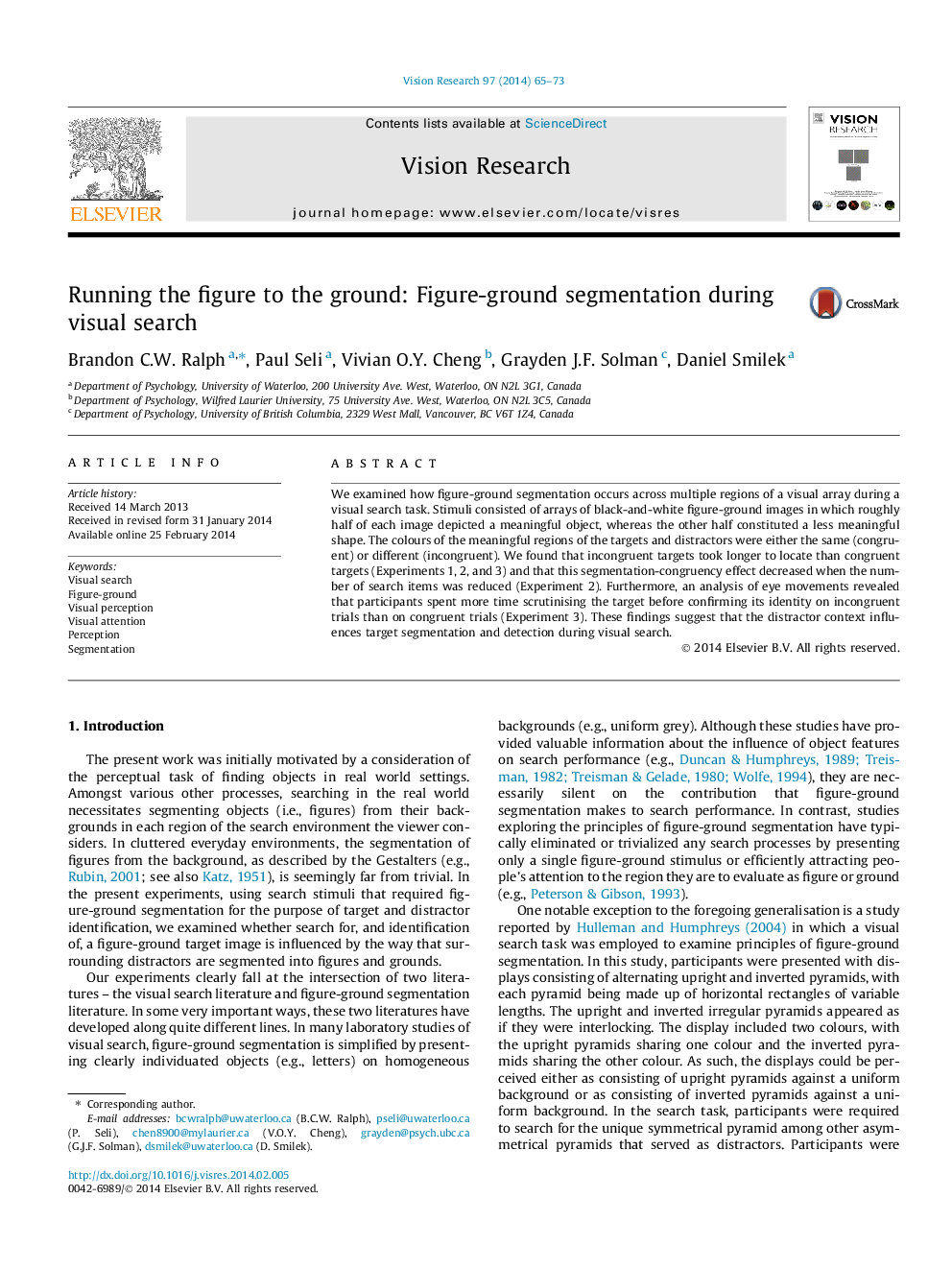| Article ID | Journal | Published Year | Pages | File Type |
|---|---|---|---|---|
| 6203542 | Vision Research | 2014 | 9 Pages |
â¢We examined figure-ground segmentation during a visual search task.â¢Incongruent targets took longer to locate than congruent targets.â¢Difference in search times decreased when the number of search items was reduced.â¢RT difference localised in time between first target fixation and response.â¢Spent longer scrutinising incongruent targets than congruent targets.
We examined how figure-ground segmentation occurs across multiple regions of a visual array during a visual search task. Stimuli consisted of arrays of black-and-white figure-ground images in which roughly half of each image depicted a meaningful object, whereas the other half constituted a less meaningful shape. The colours of the meaningful regions of the targets and distractors were either the same (congruent) or different (incongruent). We found that incongruent targets took longer to locate than congruent targets (Experiments 1, 2, and 3) and that this segmentation-congruency effect decreased when the number of search items was reduced (Experiment 2). Furthermore, an analysis of eye movements revealed that participants spent more time scrutinising the target before confirming its identity on incongruent trials than on congruent trials (Experiment 3). These findings suggest that the distractor context influences target segmentation and detection during visual search.
